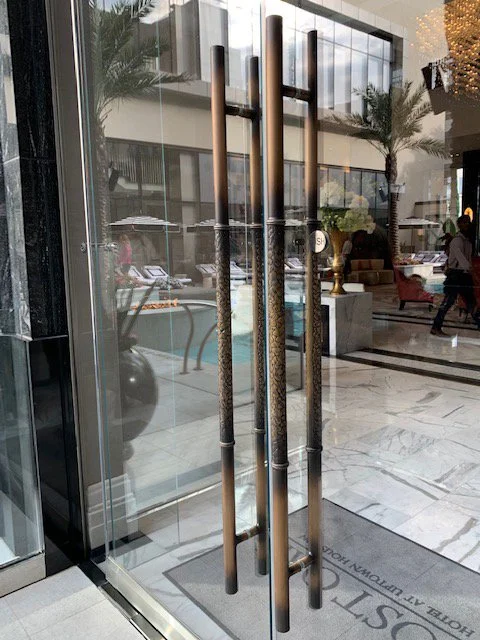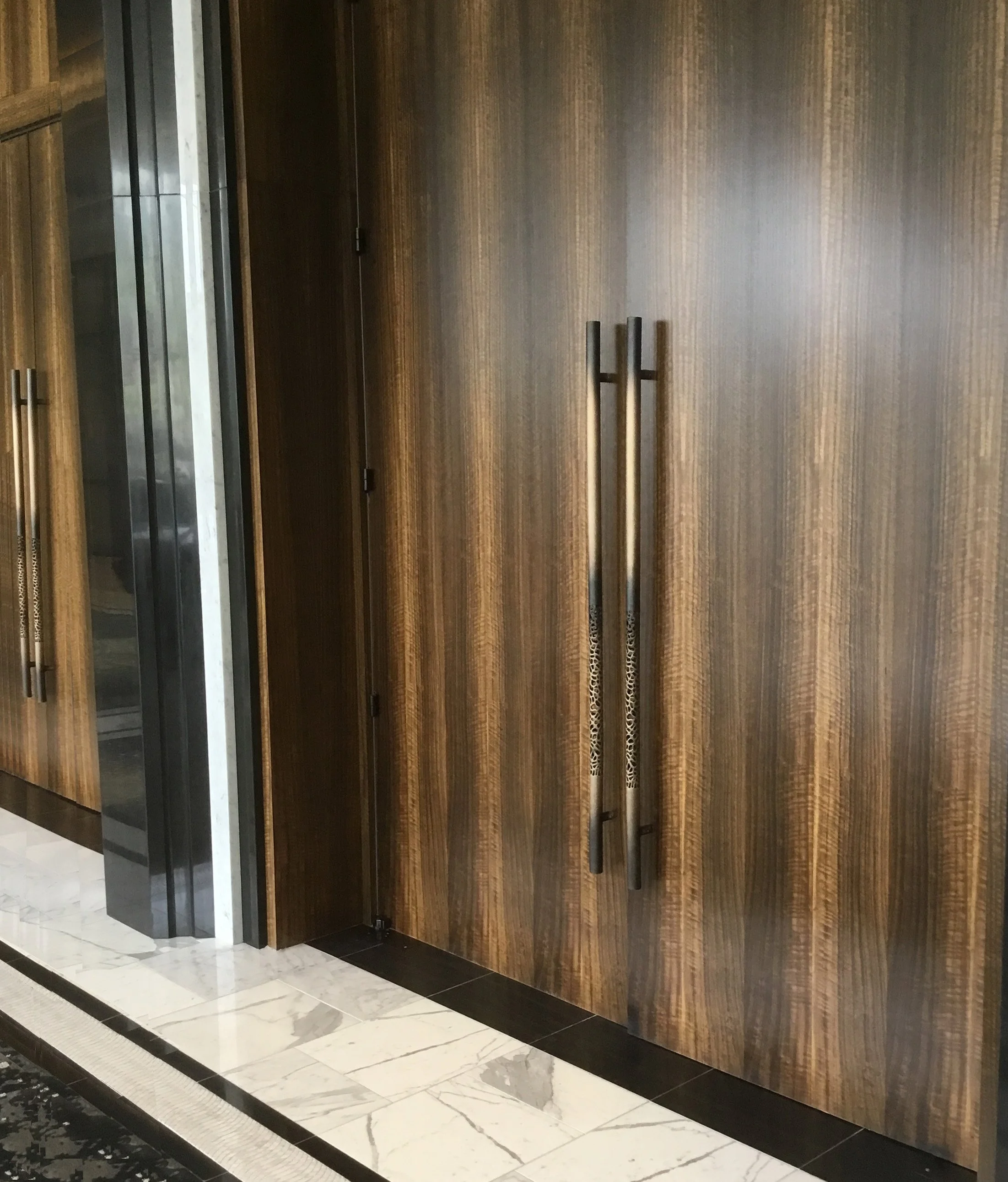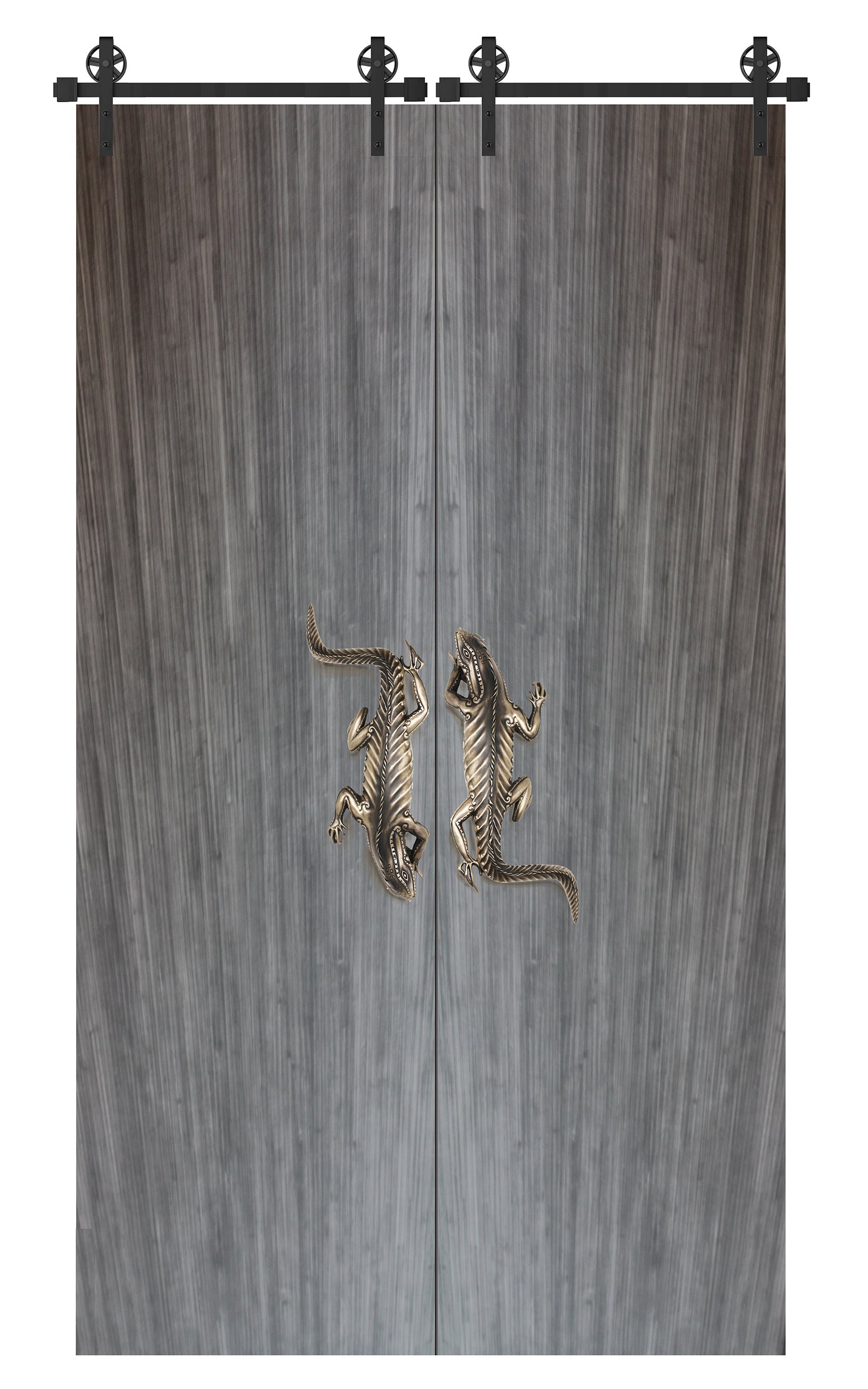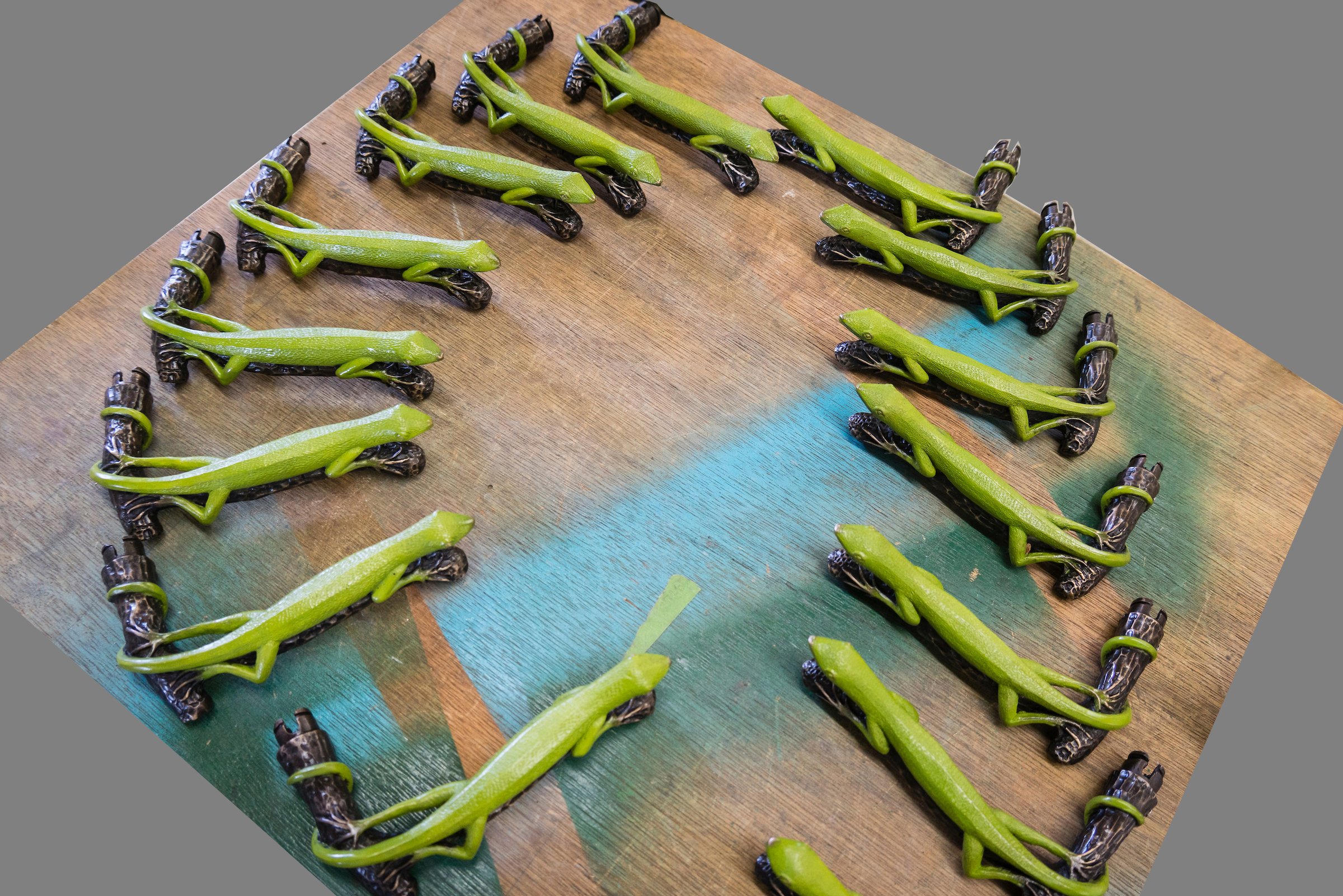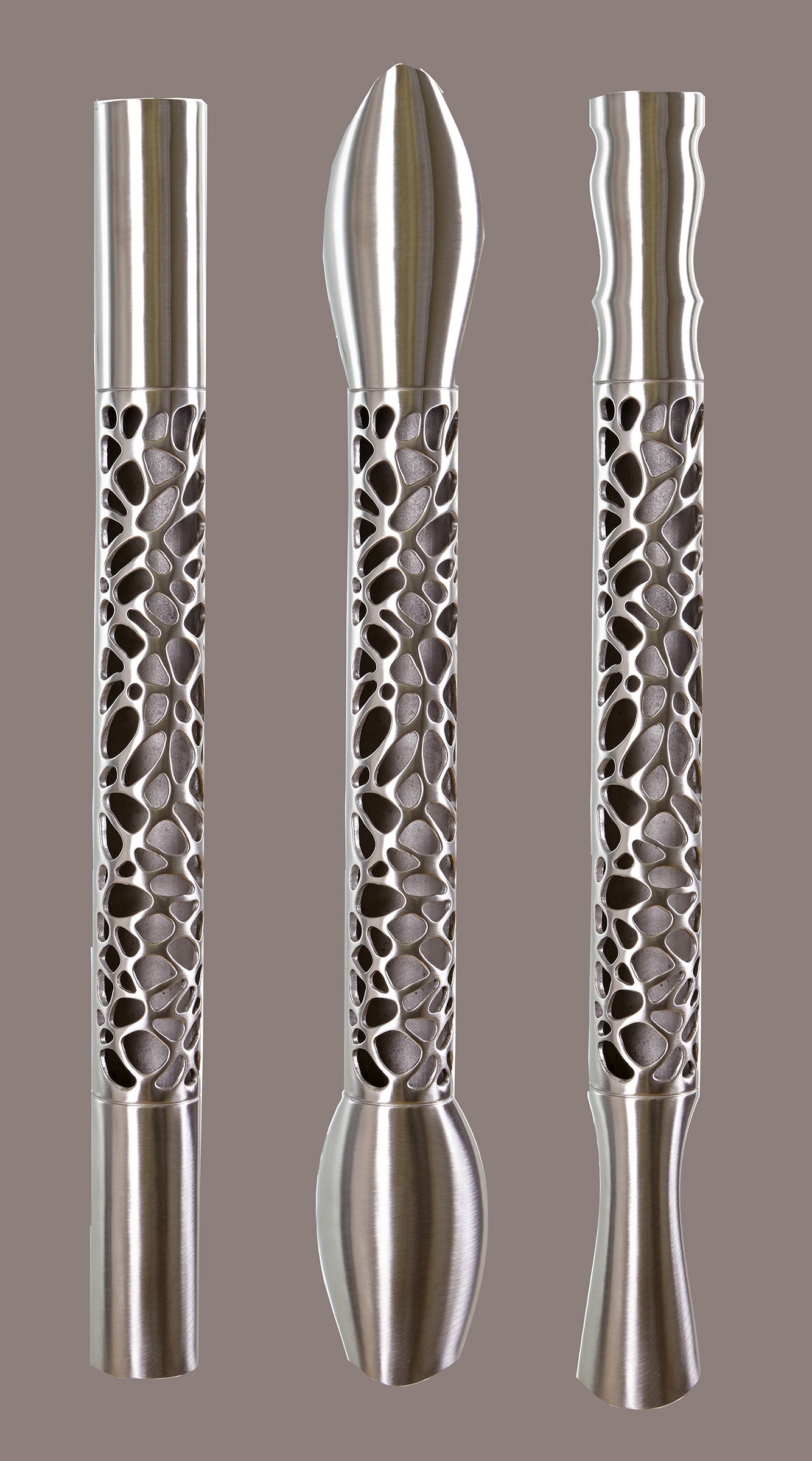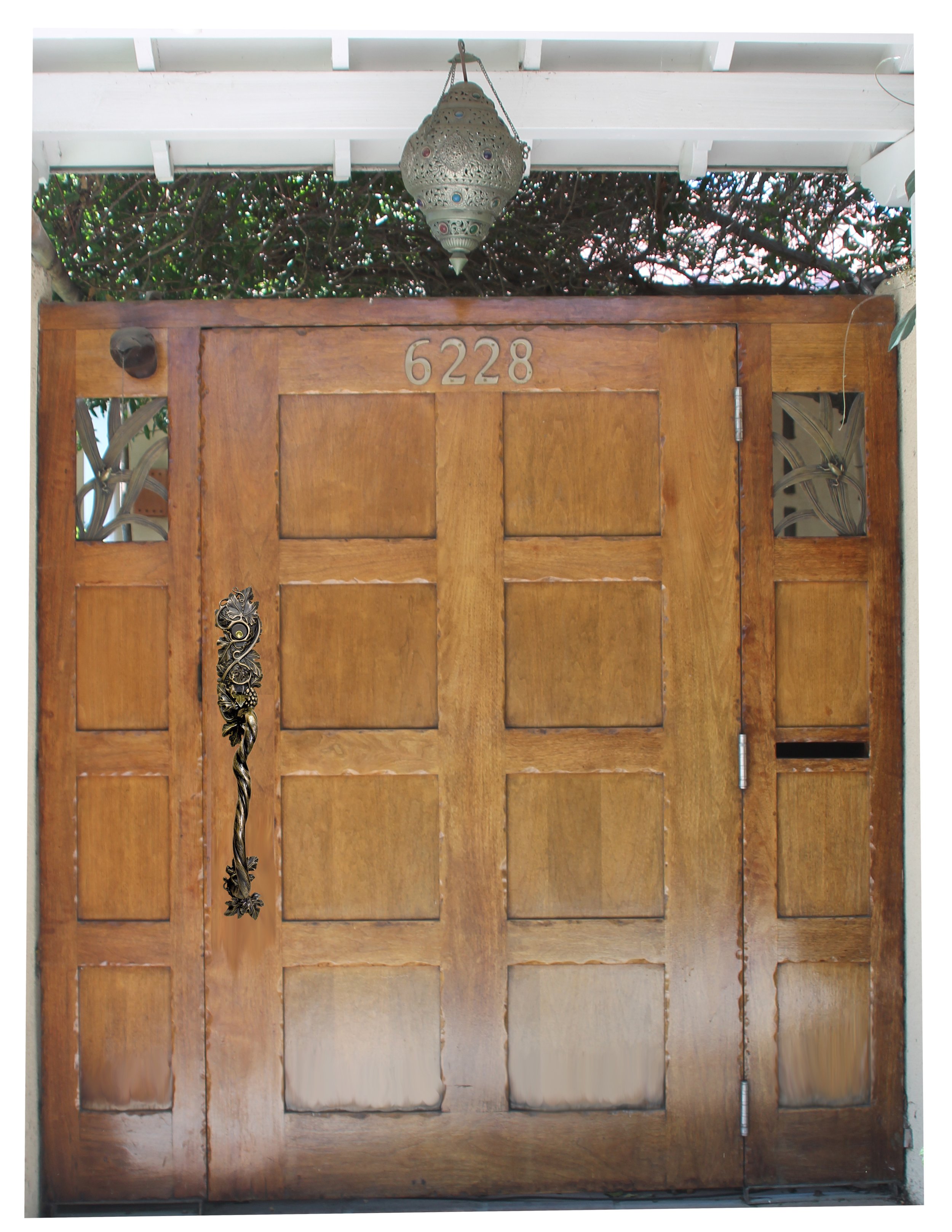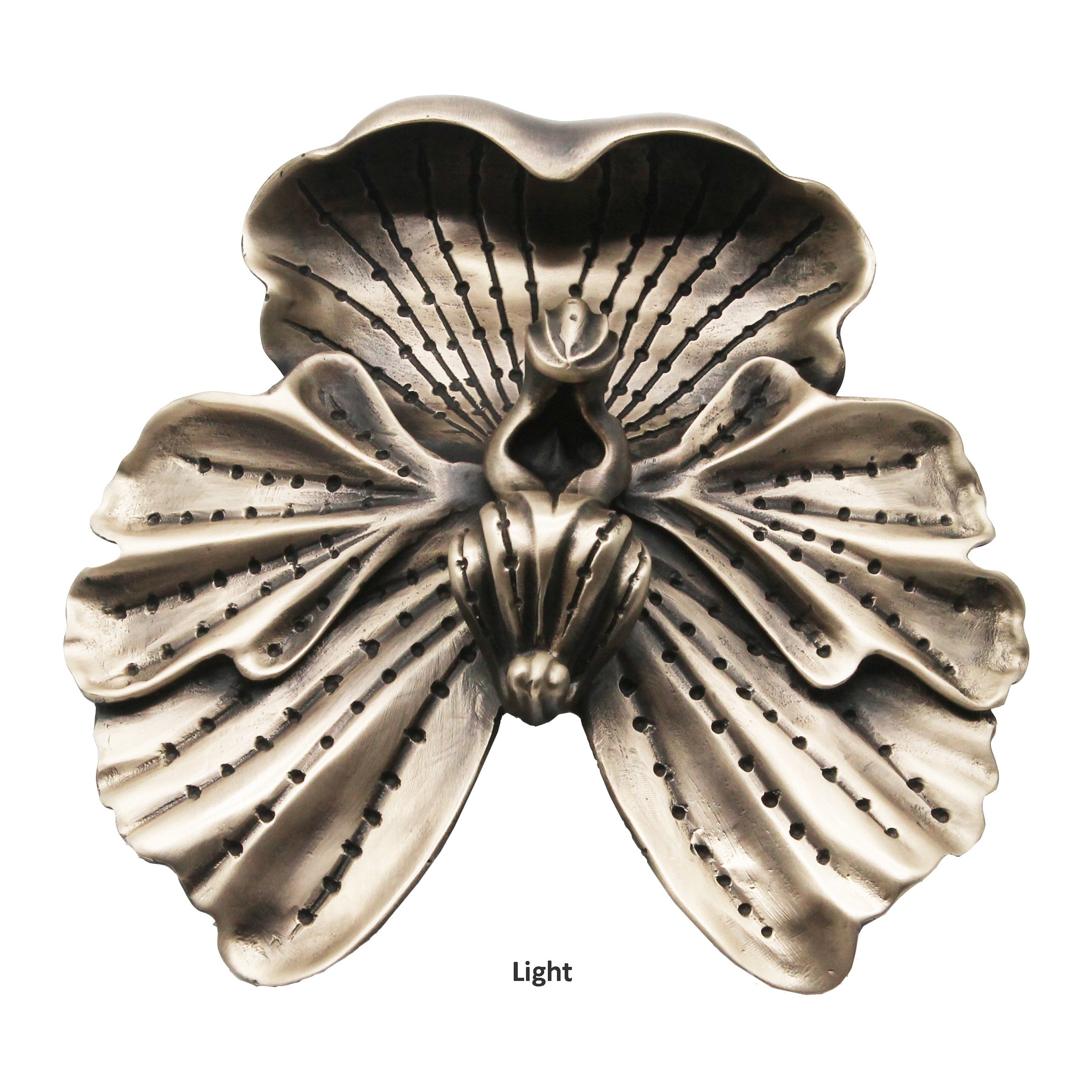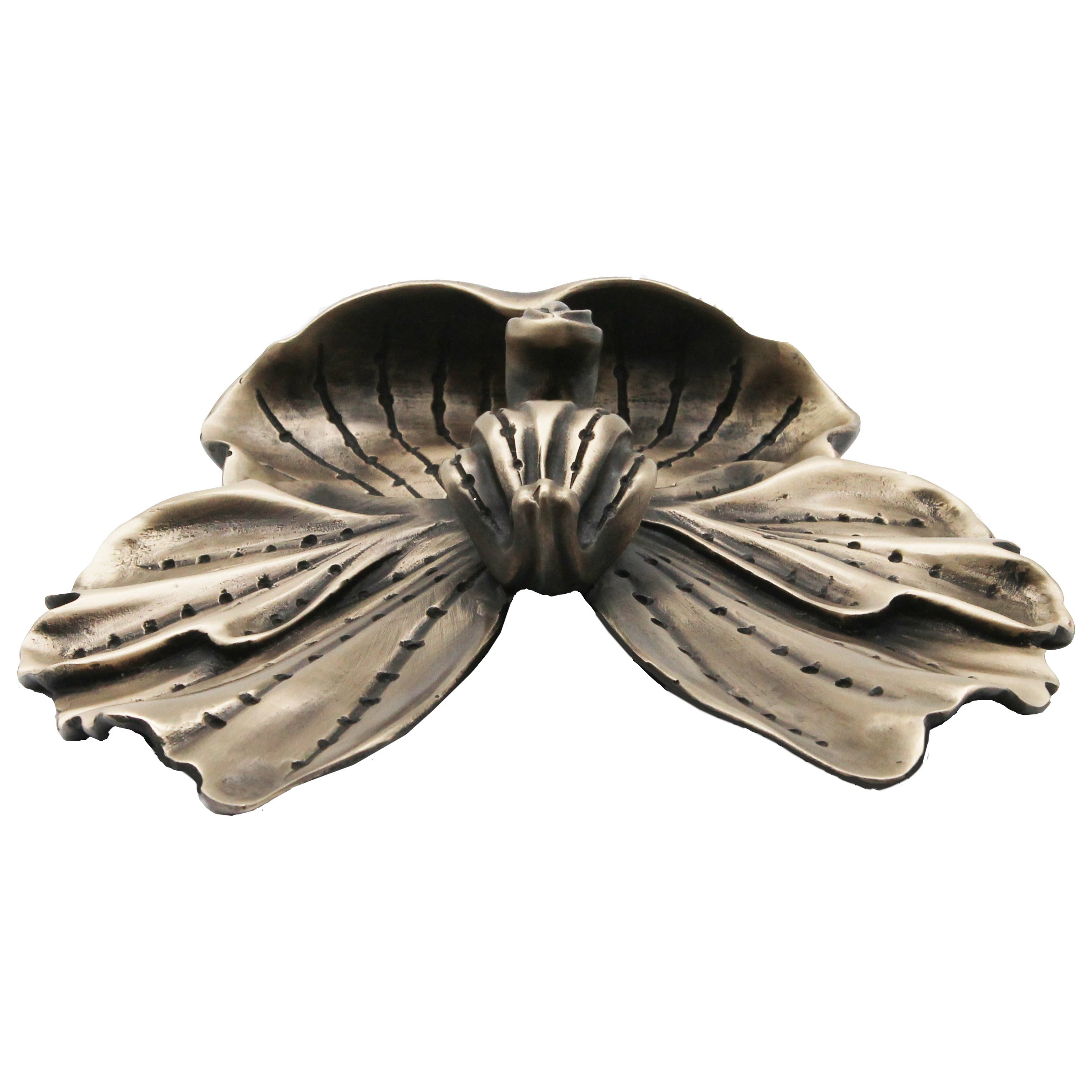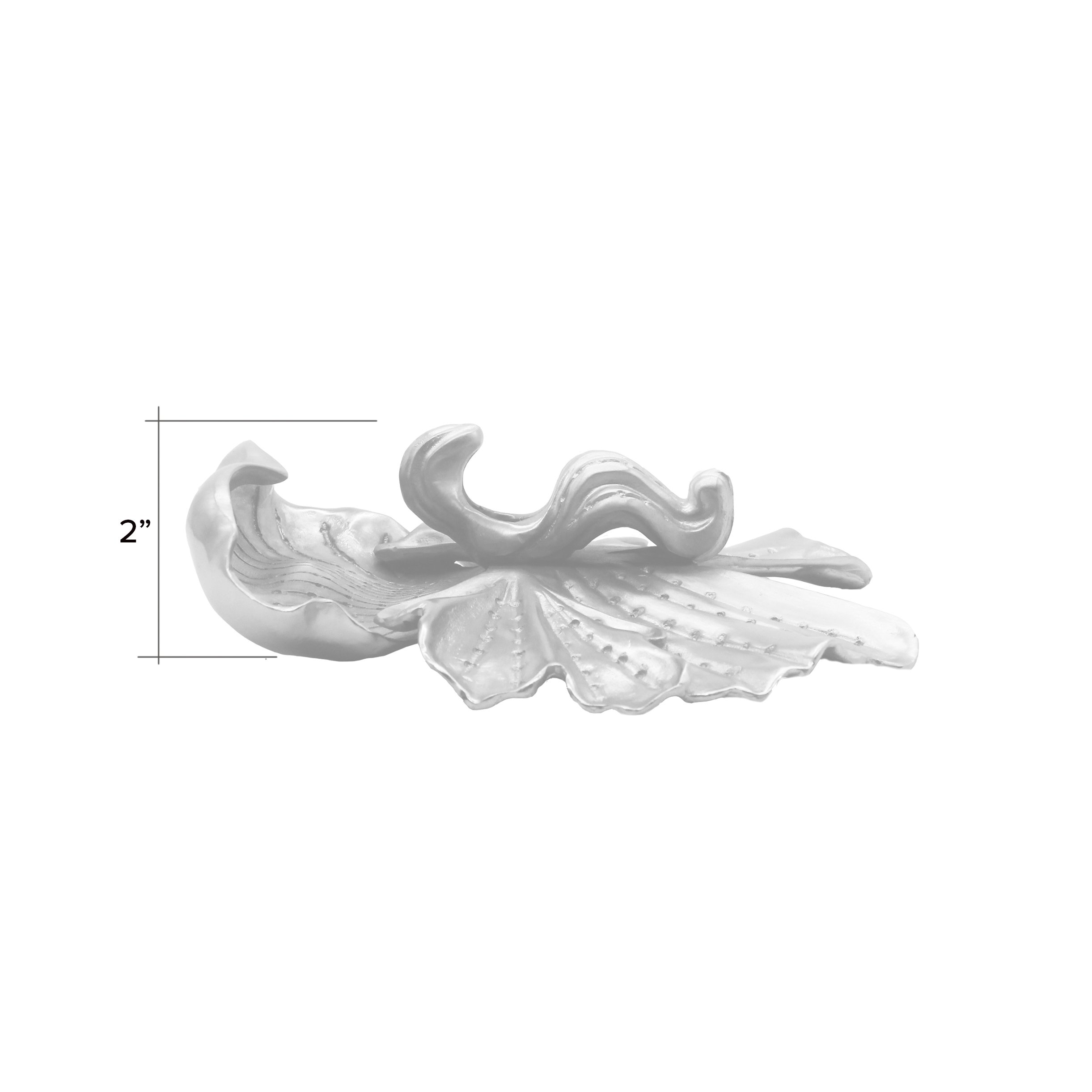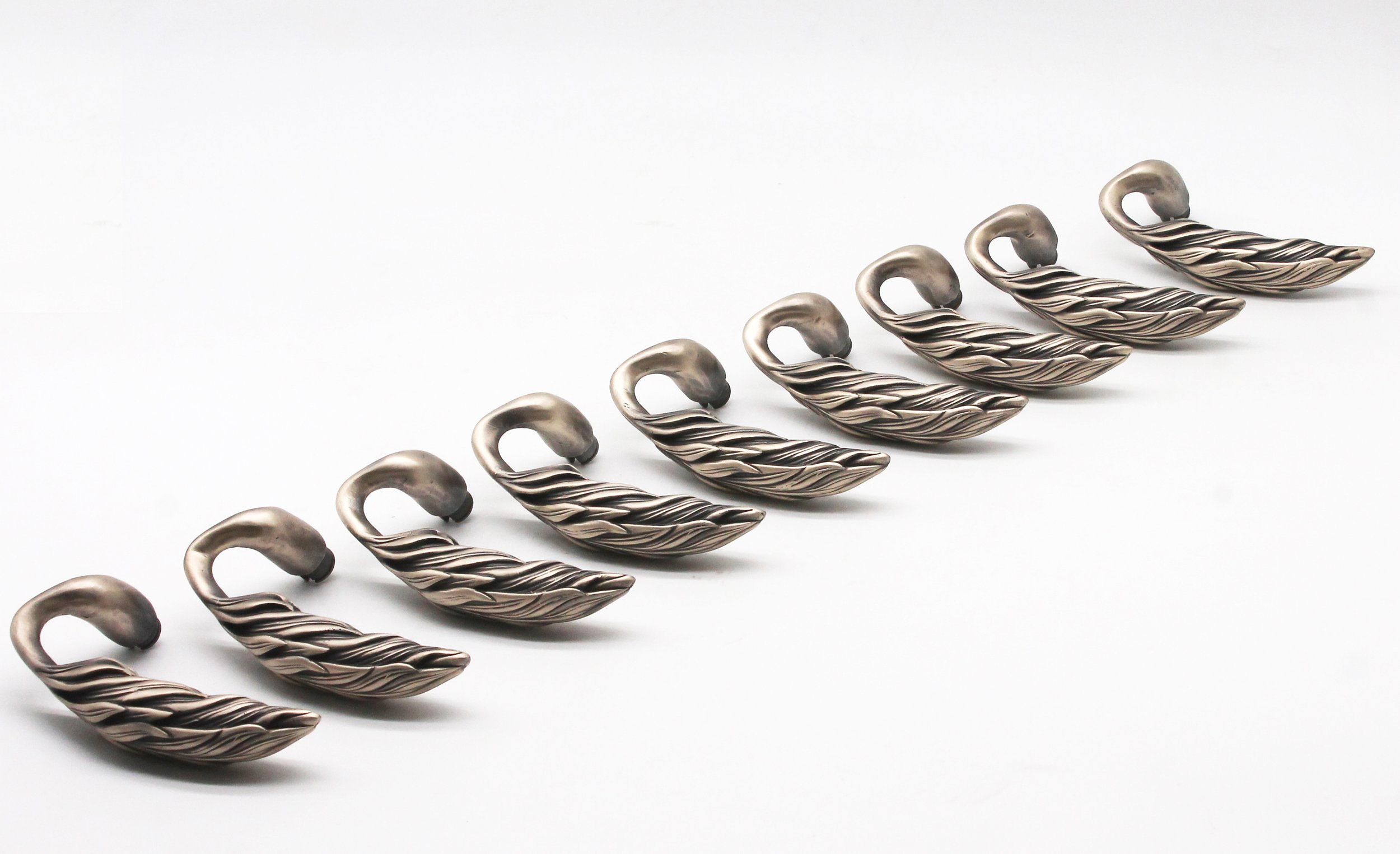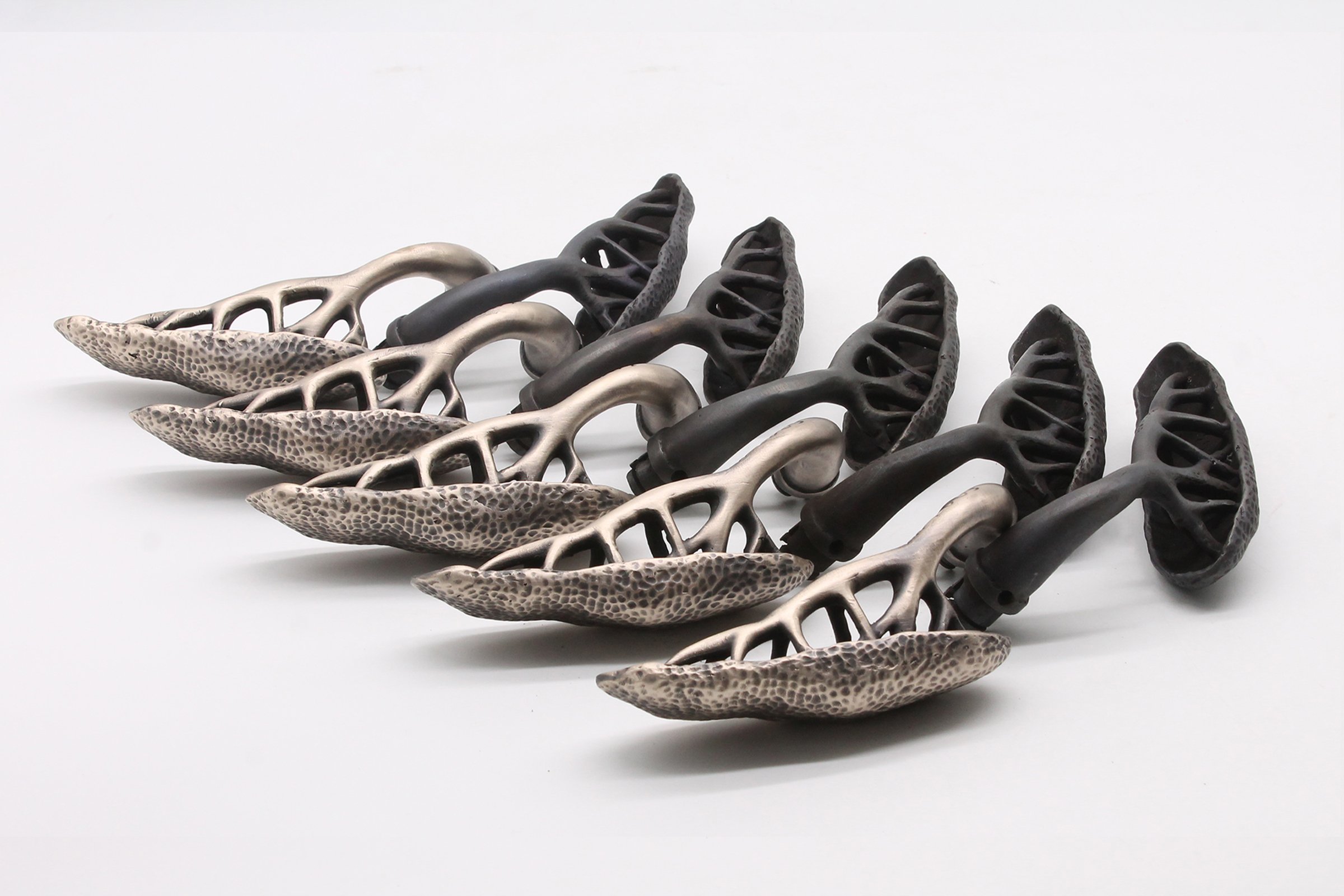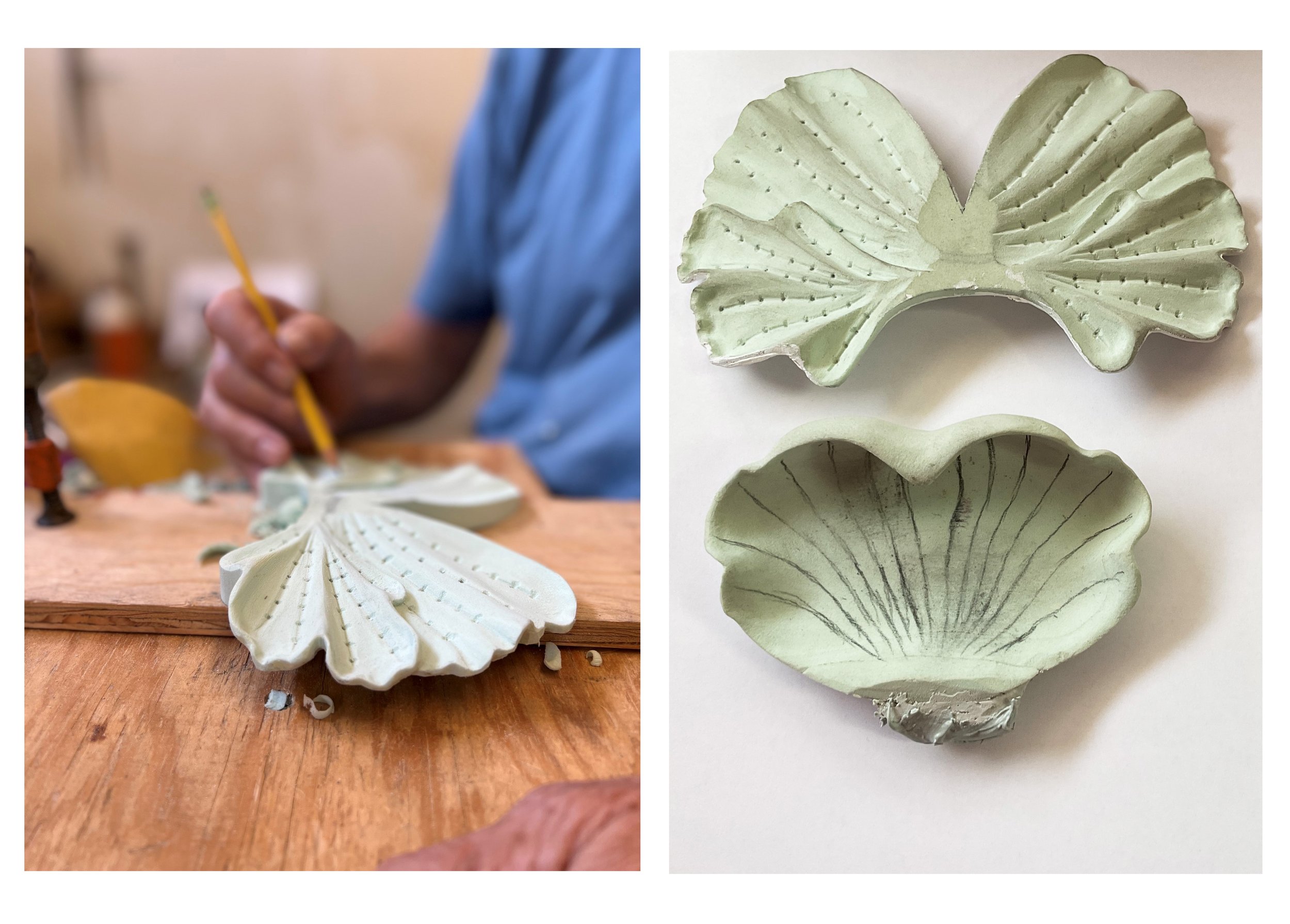Post Oak Hotel Houston – recapping the design process
A recent order from a wonderful client in Sydney, Australia led me down memory lane to the custom door handles we created for the prestigious Post Oak Hotel in Houston. However, it was the subsequent Google AI search that didn’t provide clear details that took me to the keyboard to recap this creative project.
Martin Pierce created the design for the Post Oak long door handle in 2017, and it was the second concept submitted that received approval. When asked to design an oak leaf custom handle, Martin had not realized there was a species of oak tree called the Post Oak, so his first design was based on the Live Oak found in California. The drawings below show the Post Oak on the left with the Live Oak on the right.
Upon approval, Martin Pierce began making the pattern by turning a length of basswood to create a solid cylinder and then carving the leaf pattern as an 1/8” relief carving on the surface.
The pattern details were accurately captured when cast in bronze but adding a subtle patina helped accentuate the depth and texture of the leaves.
Salon, Entry and Lobby, Post Oak Design Handles. To view other long door grips.
In a trip to the Salon at the Post Oak, my dear friend Emily Clock was able to take pictures of the oak custom handles which can also be seen in the lobby and at the entry doors.
Photo courtesy of Emily Clock. To view other long door grips by Martin Pierce.
For other focal areas including the ballrooms, meeting rooms and board room, Gensler known for their luxury hotel designs, chose a handle from the Morphic collection that was customized to a 60” length
Our involvement with the design process was not limited to the dramatic entry statements but continued through to the bathroom shower and door pulls. The Gensler team working with the concept of a gold chain helped chanel Martin’s energy to create the pieces shown blow. After several designs the braid bespoke design took shape as well as a design called ribbon that was loosely based on vertebrae segments rather than a chain. Cast in 316 rust resistant stainless steel and then polished to a fine luster these polished gems complimented the other luxury hardware selected by Gensler.




